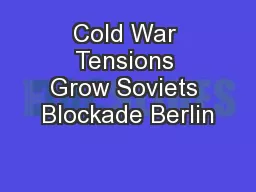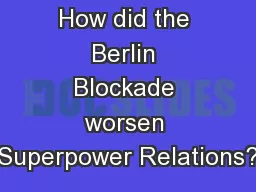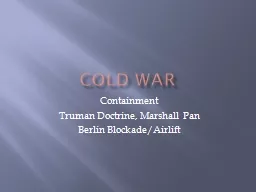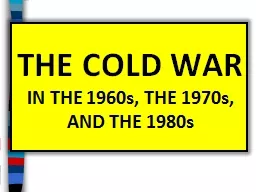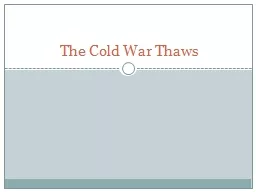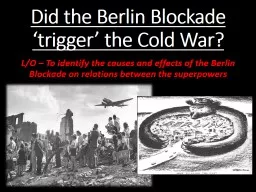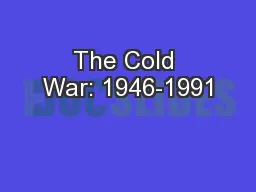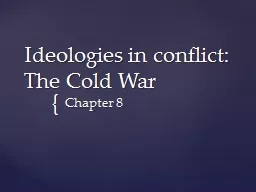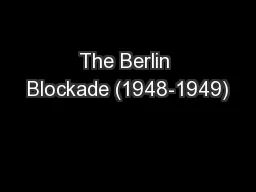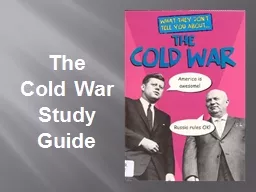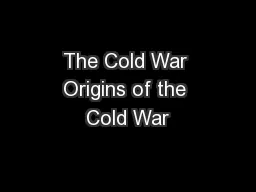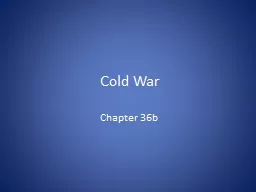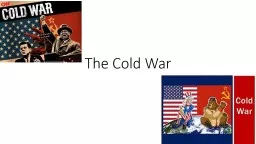PPT-Cold War Tensions Grow Soviets Blockade Berlin
Author : yoshiko-marsland | Published Date : 2018-09-25
Although Germany and Berlin the capital had been divided between the US Soviet Union Britain and France after WWII the divisions were not on complete opposite sides
Presentation Embed Code
Download Presentation
Download Presentation The PPT/PDF document "Cold War Tensions Grow Soviets Blockade ..." is the property of its rightful owner. Permission is granted to download and print the materials on this website for personal, non-commercial use only, and to display it on your personal computer provided you do not modify the materials and that you retain all copyright notices contained in the materials. By downloading content from our website, you accept the terms of this agreement.
Cold War Tensions Grow Soviets Blockade Berlin: Transcript
Download Rules Of Document
"Cold War Tensions Grow Soviets Blockade Berlin"The content belongs to its owner. You may download and print it for personal use, without modification, and keep all copyright notices. By downloading, you agree to these terms.
Related Documents

